Premium Only Content

John Dee and H. Billingsley first English translation of the Elements, 1570 (Euclid)
PDF: http://newporttowermuseum.com.
Celebrated first English translation of the Elements by Henry Billingsley (d. 1606) was published in 1570 with a lengthy preface by the mathematician and occultist John Dee (1527–1608). Billingsley incorporated commentaries from numerous printed sources, as well as new material from Dee. The latter’s preface outlined numerous uses for mathematics and included a large fold-out chart. The book is famous for the paper pop-ups in Book XI. Most of the extant copies already have the three-dimensional diagrams assembled, but one rare example where the folios with the shapes to be cut out remain intact is at The John Rylands Library at the University of Manchester Henry Billingsley, The elements of geometrie of the most auncient philosopher Euclide of Megara
In 1570, Billingsley published his translation of Euclid's Elements The elements of geometrie of the most ancient philosopher Euclide of Megara. (Actually, it should have been Euclid of Alexandria; the 𝐭𝐰𝐨 𝐄𝐮𝐜𝐥𝐢𝐝𝐬 were frequently confused in the Renaissance.) The work included a lengthy preface by John Dee, which surveyed all the existing branches of pure and applied mathematics. Dee also provided copious notes and other supplementary material. The work was printed in folio by John Day and included several three-dimensional fold-up diagrams illustrating solid geometry. Though not the very first, it was one of the first books to include such a feature.
The translation, renowned for its clarity and accuracy, was made from Greek rather than the well-known Latin translation of Campanus. Augustus De Morgan has suggested that the translation was solely the work of Dee, but in his correspondence, Dee states specifically that only the introduction and the supplementary material were his. Anthony Wood asserted that the translation was largely the work of the priest David Whitehead, who spent his final years at Billingsley's house. This story passed from Robert Barnes in Oxford to Thomas Allen, and from Allen to Brian Twyne.
Whitehead did apparently provide some assistance, but there is no evidence that the work is all his; Wood frequently reported gossip as fact. Billingsley's copy of Euclid found its way to Princeton College and Halsted described it, putting to rest the claims that the translation had been made from the Latin and that it was not Billingsley's own work.
John Dee, English Mathematician, Occultist, Astrologer, Astronomer Was Born - On July 13, 1527
Dee, one of the most learned men of his time, lived when people were in the process of learning the difference between science and magic.
He was also interested in magic and Hermetic philosophy. He spent the last third of his life studying mostly these subjects. During his time, these subjects were not thought to be opposed to science. They were thought to be part of science.
He graduated from St. John's College, Cambridge, when he was eighteen. He was a founding fellow of Trinity College.
He lectured briefly at Cambridge and later studied in continental Europe under the famous mathematician-cartographers such as 𝐀𝐛𝐫𝐚𝐡𝐚𝐦 𝐎𝐫𝐭𝐞𝐥𝐢𝐮𝐬, and 𝐆𝐞𝐫𝐚𝐫𝐝𝐮𝐬 𝐌𝐞𝐫𝐜𝐚𝐭𝐨𝐫.
Hoping to obtain an official position with the English crown, Dee turned down a mathematical professorship at the University of Paris in 1551 and a similar position at the University of Oxford in 1554
In 1555, Dee was arrested and charged with practicing black magic for having cast horoscopes of Queen Mary and Princess Elizabeth; the charges were expanded to treason against Mary; Dee cleared himself, was released, and became a scientific advisor to Elizabeth I, even acting as a spy for her. He built a laboratory and the largest private library in England at that time, which was said to number more than 4,000 books and manuscripts
His famous and highly valued work about Kabbala and alchemy is entitled Monas Hieroglyphica ("The Hieroglyphic Monad") and was written in 1564. He also wrote the preface to the first English translation of Euclid's works
In the early 1580s, he started to use supernatural ways to get more knowledge, especially from the angels, so he met Edward Kelly, and they became companions. Kelly helped Dee to get visions from angels using a crystal ball
The angels gave them a language called Enochian and dictated several books through Kelly. Dee's crystal ball ended up in the British Museum. It went unnoticed for many years in the mineral collection. Most of the still existing papers of Dee are also in the British Museum.
In 1583, while Dee was away in Europe, his home and library at Mortlake were destroyed by a mob; most probably, many of his books had been stolen by former friends and associates.
He asked Queen Elizabeth for help. She made him Warden of Christ's College, Manchester, in 1592. He remained in this position until 1604, and when Elizabeth I died in 1603, Dee was forced to retire. He died in poverty in 1608 or 1609
Music: Johan Julius Christian (Jean) Sibelius, Finlandia
#JohnDee #Elements #Euclid
-
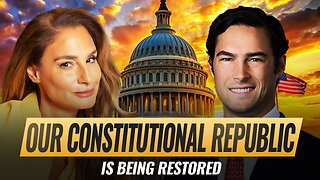 22:39
22:39
The Mel K Show
10 hours agoMel K & Representative Brandon Gill | Our Constitutional Republic is Being Restored | 4-26-25
55.6K46 -
 4:17:17
4:17:17
VapinGamers
9 hours ago $4.95 earned📣 Fortnite Family Night! - Games and Dubs with BrianZGame - !rumbot
44.1K3 -
 4:27:48
4:27:48
ThePope_Live
8 hours agoLIVE - First time playing The Finals in over a YEAR! Still good? with @Arrowthorn
34K1 -
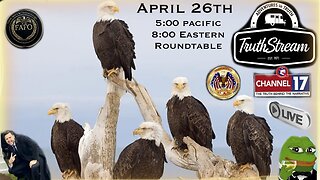 3:06:26
3:06:26
TruthStream with Joe and Scott
14 hours agoRoundtable with Patriot Underground and News Treason Live 4/26 5pm pacific 8pm Eastern
56.1K35 -
 8:52
8:52
Tundra Tactical
11 hours ago $10.02 earnedSCOTUS Denies Appeal, Minnesota Courts Deal 2a Win!
55.5K11 -
 10:36:01
10:36:01
a12cat34dog
13 hours agoONE WITH THE DARK & SHADOWS :: The Elder Scrolls IV: Oblivion Remastered :: FIRST-TIME PLAYING {18+}
77K6 -
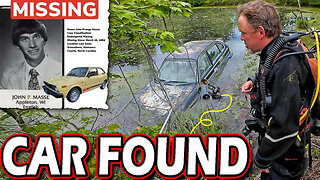 22:27
22:27
Exploring With Nug
20 hours ago $12.87 earnedSwamp Yields a Chilling Discovery in 40-Year Search for Missing Man!
67.9K23 -
 1:23:26
1:23:26
RiftTV/Slightly Offensive
15 hours ago $12.30 earnedThe LUCRATIVE Side of Programming and the SECRETS of the "Tech Right" | Guest: Hunter Isaacson
73.2K36 -
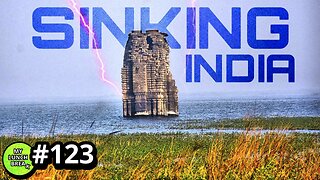 27:57
27:57
MYLUNCHBREAK CHANNEL PAGE
1 day agoDams Destroyed India
77K25 -
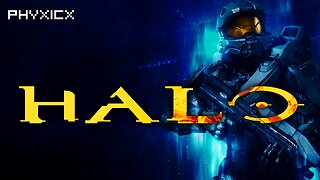 11:42:02
11:42:02
Phyxicx
15 hours agoLast minute practice before Sunday - 4/26/2025
56.5K3